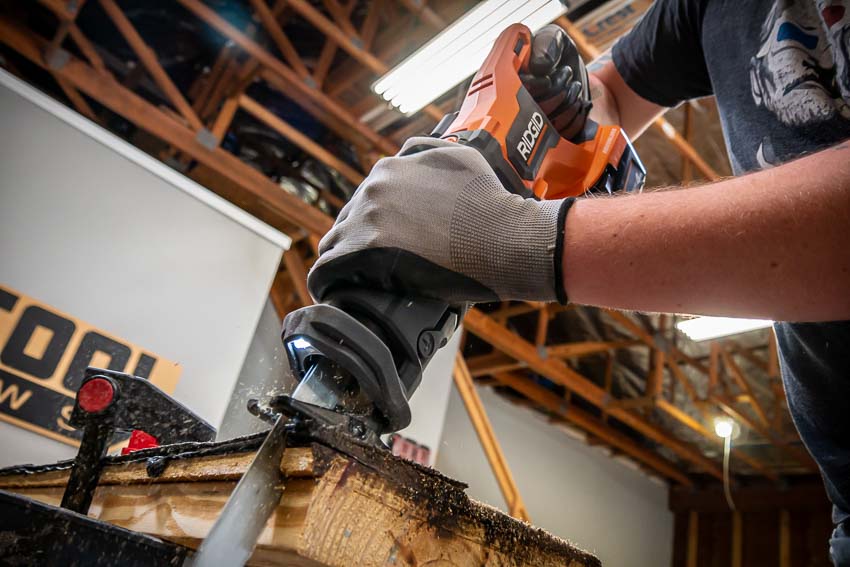Ridgid 18V Brushless Reciprocating Saw Tears Through Demo at 3200 SPM
The Ridgid 18V Brushless Reciprocating Saw continues the brand’s push beyond Octane as the latest generation continues its rollout at The Home Depot. There’s a lot that’s familiar about the saw’s design, but it’s the promise of higher performance that’s high on our minds.
Pros
- 1 1/4-inch stroke length and 3200 SPM
- Extremely fast in wood cutting
- Orbital action switch
- Reasonably lightweight and compact
Cons
- No variable speed dial
Ridgid 18V Brushless Reciprocating Saw Performance
Ridgid decided to crank things up a notch with the performance of this reciprocating saw. Comparing it to the Octane version, the stroke length moves from 1 1/8 inches to 1 1/4 inches. The stroke rate is also higher, moving from 3100 SPM to 3200 SPM. In fact, that’s one of the best combinations of stroke length and rate that you’ll find in any brand’s cordless model.
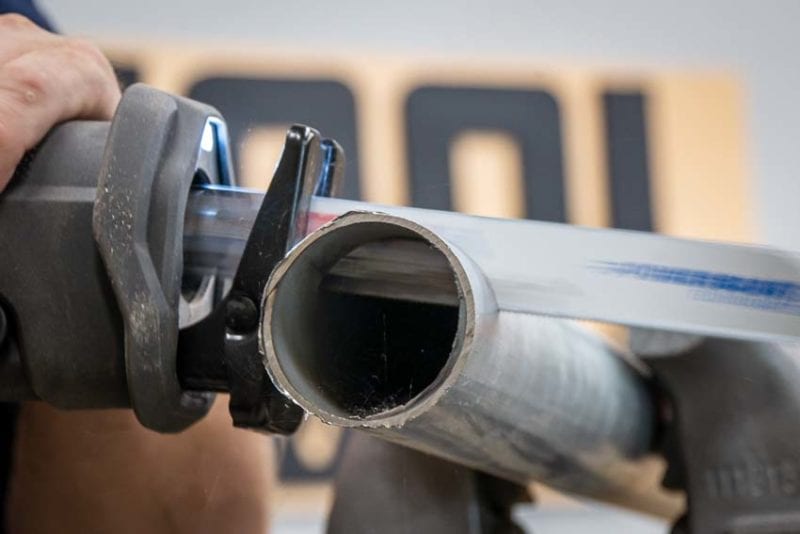
To see how that translates to work, we introduced the saw to our Test Track. If you haven’t seen it yet, it consists of three sections:
PTR Reciprocating Saw Test Track
- 2-inch cast iron
- Double stud with 4 framing nails
- 2×10 roofing sandwich (asphalt shingles, galvanized flashing, tar, peel and stick underlayment, 1/2-inch OSB, and 2×10 yellow pine with five framing nails)
We start with a new LENOX LAZER CT carbide-tipped blade for medium metal on the cast iron and switch over to a LENOX Demolition CT carbide-tipped blade for the two wood sections.
When the dust settled, Ridgid finished in a respectable 1:33.05. However, that was actually about 9 seconds slower than the Octane model (1:23.70).
That wasn’t what we were expecting, so we took a closer look at each section. Starting in the cast iron, Ridgid’s aggressive stroke length and speed may have actually hurt its time a bit. It had some trouble getting the blade’s carbide teeth going and took some time to get them cutting efficiently. In fact, feathering the trigger for a soft start helps a lot and can make up quite a bit of time.
Wood is a completely different story. The saw’s time was solid in the double stud (10.69 seconds) and it torched our roofing sandwich in just 17.40 seconds. To put that in perspective, Milwaukee’s M18 Fuel Super Sawzall took just over 20 seconds to rip through the roofing sandwich. That’s impressive!
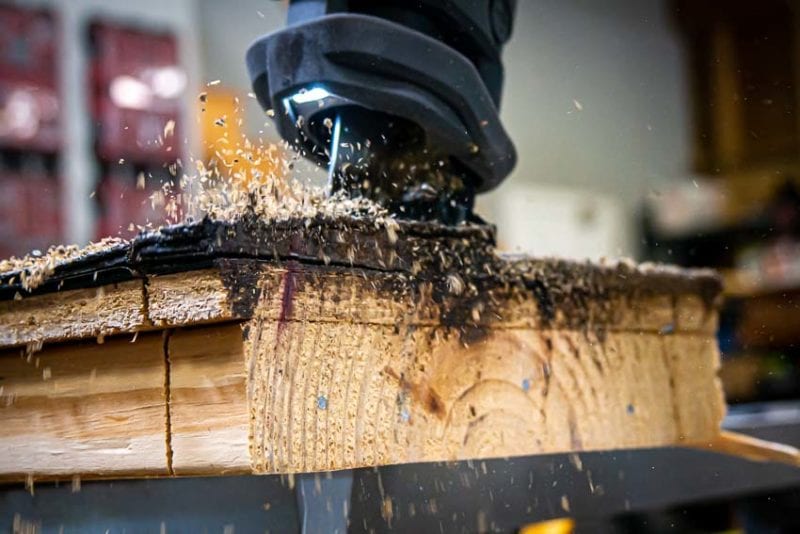
On the next generation, we’d love to see a variable speed dial come into play for that thick metal cutting. Just don’t mess with the top end speed or stroke length for when we’re cutting in wood!
Ridgid 18V Brushless Reciprocating Saw Design Notes
Size and Weight
Ridgid hasn’t targeted the big 15-amp corded reciprocating saws yet, keeping this model more manageable in its size and weight. At 17 7/8 inches long, it’s about 1/2 an inch shorter than the Octane model.
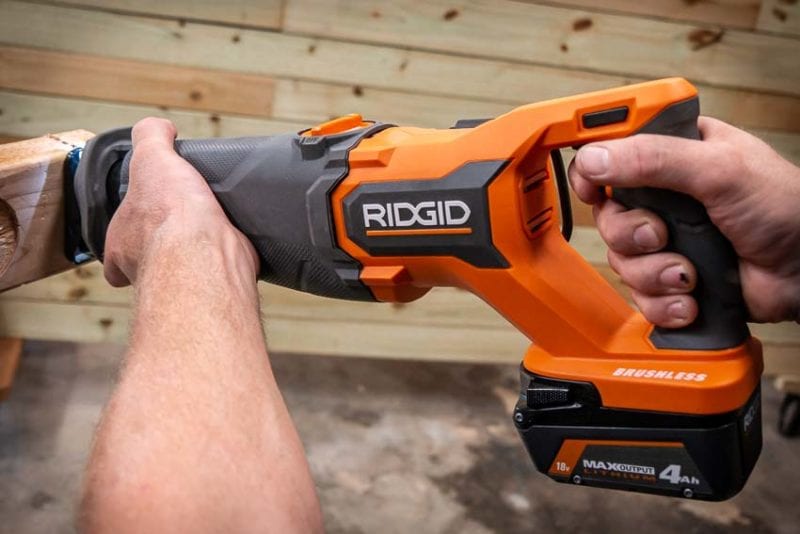
It’s also lighter by nearly 1/2 a pound. It weighs 6.8 pounds bare and a 4.0Ah Max Output battery brings it up to 8.3 pounds. That obviously jumps up if you use a higher capacity Octane battery, but it’s one of the lighter cordless saws at this performance level.
Features
Ridgid has traditionally had one of the most feature-rich cordless reciprocating saws on the market and that’s not changing with this update.
- Orbital action switch
- Tool-free shoe length adjustment
- Blade release lever on the side of the tool
- Rafter hook
- Variable speed trigger
- Lock off switch
- LED light
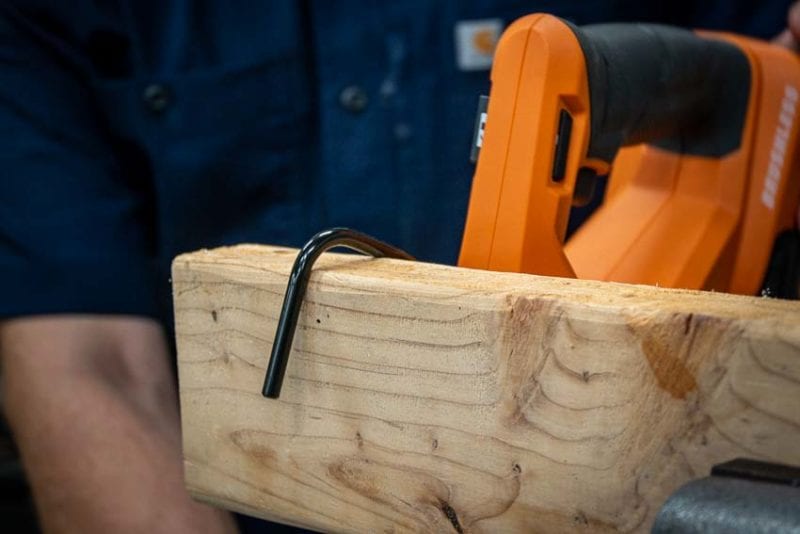
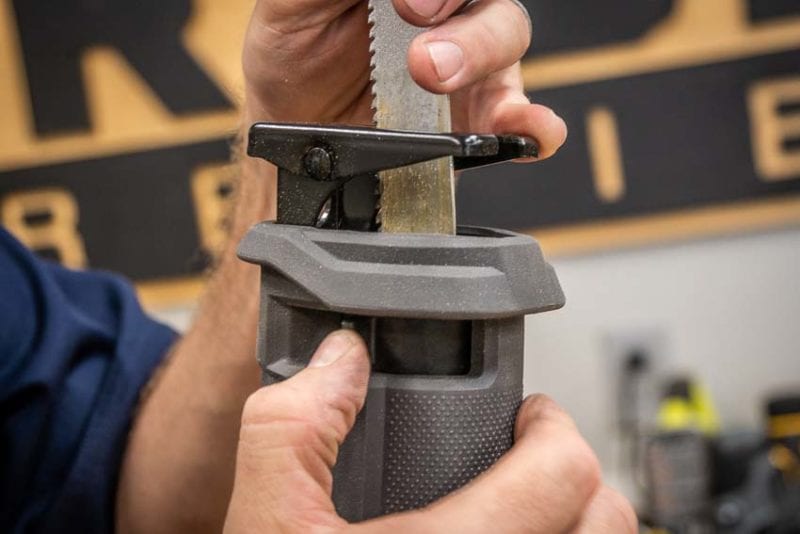
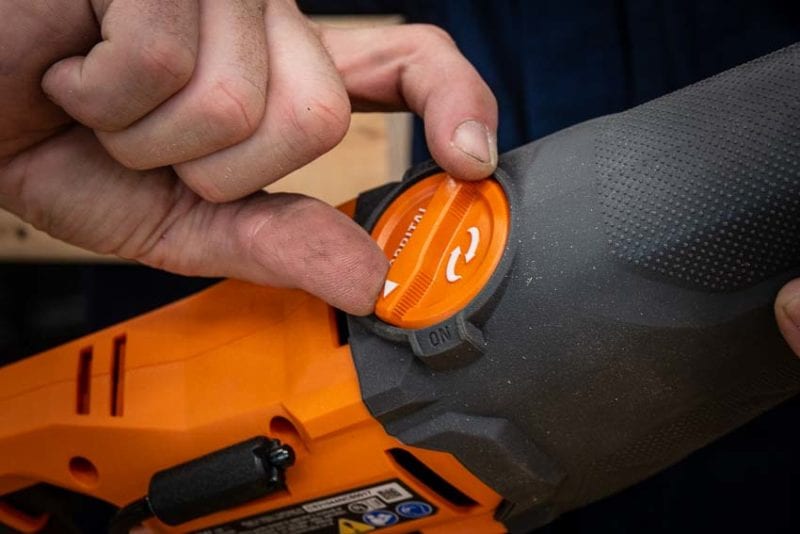
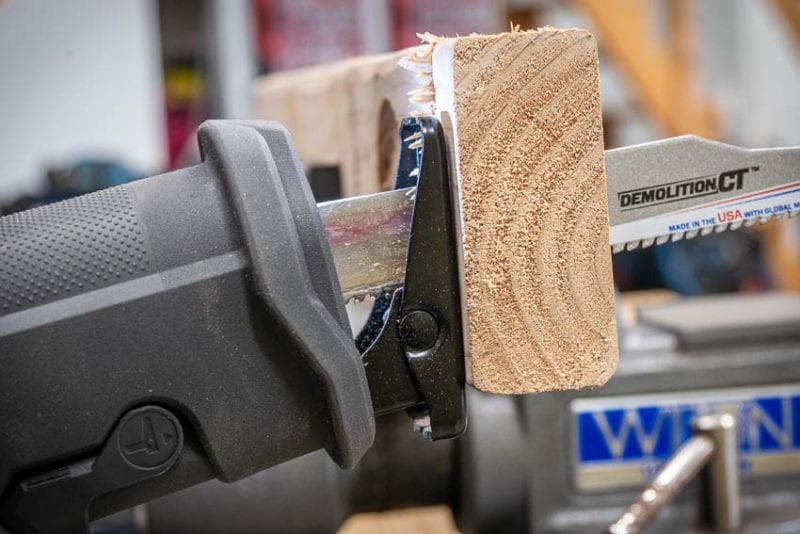
In terms of what’s missing, there’s not a ton. Like we mentioned earlier, a variable speed dial would be nice in some situations. There are also no smart controls. Milwaukee’s M18 Fuel Sawzall with One-Key is about the only saw with app-based controls at the moment.
Ridgid 18V Brushless Reciprocating Saw Price
There are a couple of ways to get your hand on this saw. As a bare tool, it runs $169 at The Home Depot. A kit option adds a charger and two 4.0Ah Max Output batteries for $268.
Ridgid 18V Brushless Reciprocating Saw Vs Octane Quick Comparison
| 18V Brushless R8647 | 18V Octane R8643 | |
|---|---|---|
| Stroke Length | 1 1/4 in. | 1 1/8 in. |
| Stroke Rate | 3200 SPM | 3100 SPM |
| Orbital Action | Yes | Yes |
| Length | 17 5/8 in. | 18 1/4 in. |
| Bare Weight | 6.8 lbs. | 7.2 lbs. |
| PTR Test Track Time | 1:33.05 | 1:23.70 |
| Bare Price | $169 | $149 |
The Bottom Line
The Ridgid 18V Brushless Reciprocating Saw is a beast of a tool that absolutely shreds wood and mixed materials. It needs a little trigger feathering in thick metal to help it get into the cut, but then it’s off to the races. As an upgrade to Octane, it clearly has higher performance. If you’re debating between the two, spend the extra $20 for the upgraded model. However, Octane still has relevant performance, so go ahead and keep using that model if you already have it.
Ridgid 18V Brushless Reciprocating Saw Specifications
- Model: Ridgid R8647
- Power Source: Ridgid 18V battery (Max Output recommended)
- Stroke Length: 1 1/4-inch
- Stroke Rate: 3200 SPM
- Weight: 6.8 lbs bare, 8.3lbs with 4.0Ah Max Output battery
- Length: 17 7/8 inches
- Warranty: Lifetime Service Agreement with registration
- Price: $169

